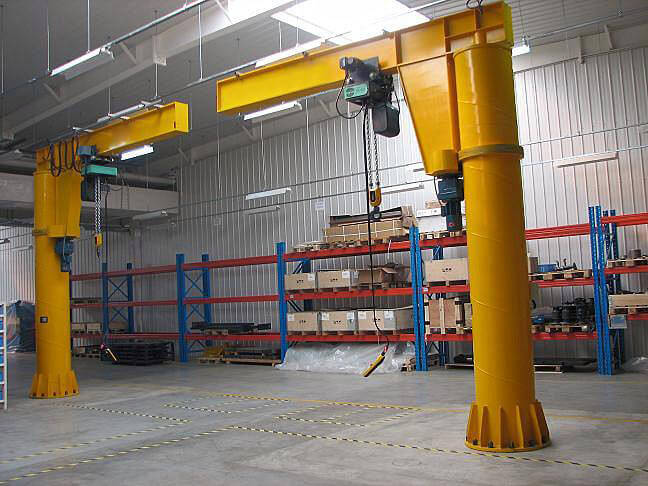The jib crane is a medium and small lifting equipment. In the jib crane, it is composed of a fetching device, a metal mechanism, a driving device, an operation control system, and a working mechanism.
When the jib crane is in use, through the manipulation of the control system, the driving device effectively converts the power energy into mechanical energy, and transmits the force and movement speed to the retrieval device, which connects the material to be transported with the crane Get up, and complete the material handling task through the working mechanism alone or in combination. The movable metal structure connects the components into a whole, and carries the weight and hoisting weight of the crane.
Lifting mechanism, operating mechanism, luffing mechanism and rotating mechanism are called the four major mechanisms of jib cranes. The jib crane achieves the purpose of transporting materials through the single movement of a certain mechanism or the combined movement of multiple mechanisms.
The lifting mechanism is a mechanism used for vertical lifting of materials and is the core mechanism of the crane. As long as there is a lifting mechanism, the mechanism can be called a lifting device.
The operating mechanism is the mechanism used to realize the horizontal handling of materials. Some operating mechanisms are only used to adjust the working position of jib cranes.
The luffing mechanism is a mechanism that changes the working range by changing the length and elevation angle of the boom.
The rotating mechanism can make the boom rotate around the vertical axis of the jib crane, so that the jib crane can move materials in the annular space. The luffing mechanism and rotating mechanism are unique working mechanisms of jib cranes.


No Responses